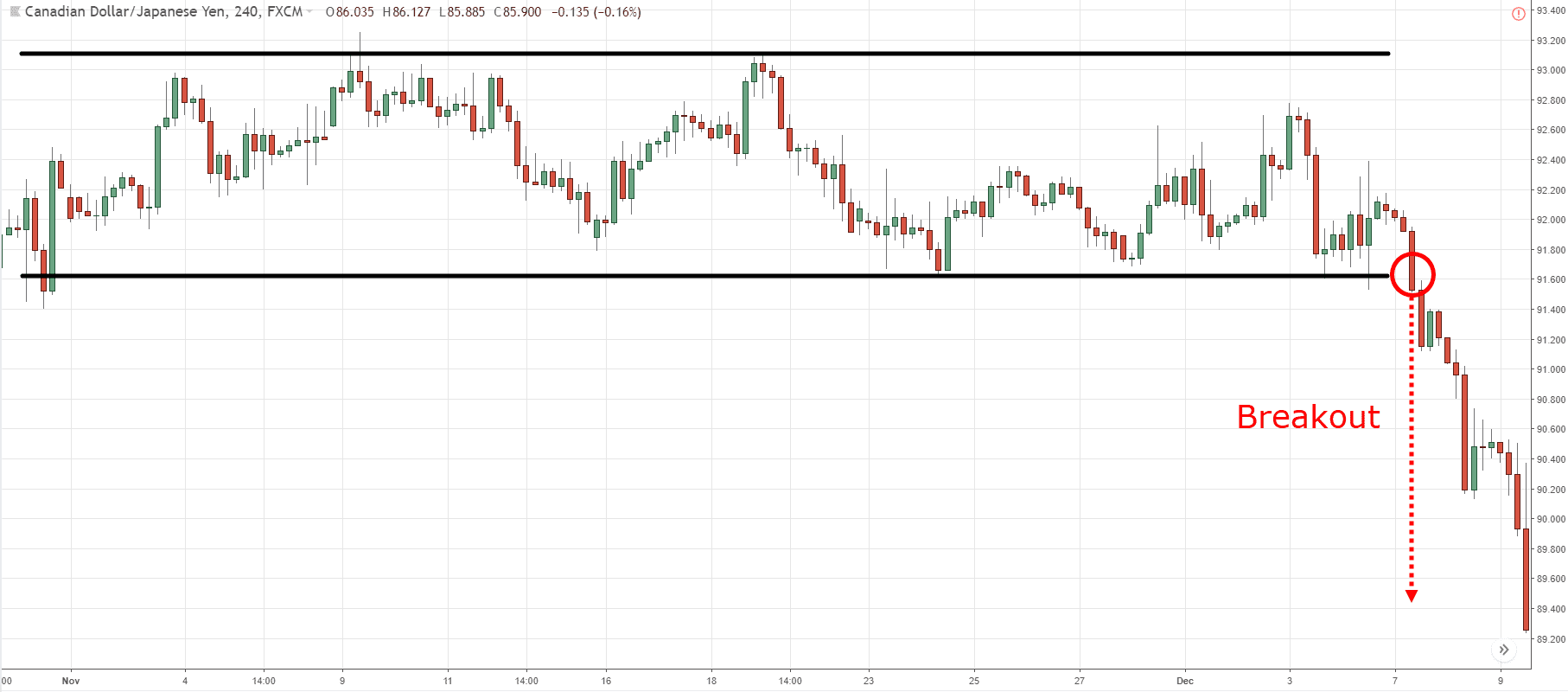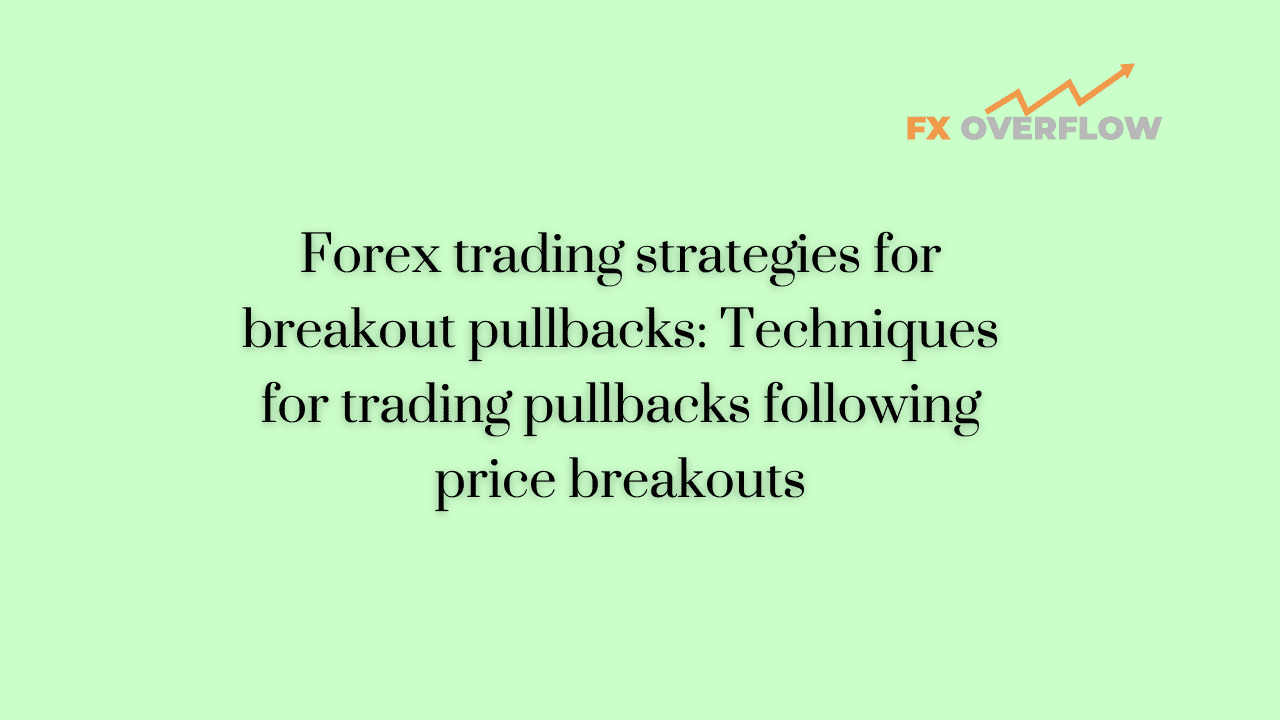Forex trading strategies for breakout pullbacks: Techniques for trading pullbacks following price breakouts.
Forex trading is a dynamic endeavor that requires traders to navigate through various strategies to harness profitable opportunities. Among these strategies, breakout pullback trading has gained popularity for its ability to combine the benefits of breakouts and pullbacks, enabling traders to capitalize on market momentum. In this comprehensive article, we will delve into the intricacies of breakout pullback trading strategies, providing step-by-step explanations, addressing frequently asked questions, and concluding with key takeaways.

Table Content
I. Introduction to Breakout Pullbacks
II. Step-by-Step Explanation
1. Identifying the Breakout
2. Confirming the Breakout
3. Establishing the Pullback Zone
4. Waiting for the Pullback
5. Analyzing Price Action
6. Using Indicators
7. Entry Strategy
8. Setting Stop Loss and Take Profit
9. Managing the Trade
10. Trade Exit
III. Frequently Asked Questions (FAQs)
IV. Footnote
Introduction to Breakout Pullbacks:
Breakout pullback trading is centered around the concept of identifying and capitalizing on market momentum after a breakout has occurred. Breakouts signify a significant move in price beyond a predefined range or level of resistance/support. After the breakout, the price often retraces or "pulls back" before potentially continuing in the direction of the breakout. This pullback presents traders with an opportune entry point to join the trend established by the breakout.
Step-by-Step Explanation:
1. Identifying the Breakout:
The first step in implementing a breakout pullback strategy is to identify the breakout itself. This involves recognizing when the price moves decisively beyond a key level of support or resistance. Technical tools such as trendlines, moving averages, and Bollinger Bands can aid in pinpointing potential breakout points.
2. Confirming the Breakout:
Once a potential breakout is identified, it's essential to confirm its validity. Traders often look for strong volume accompanying the breakout, as this indicates genuine market interest and participation in the new price movement. A breakout with high volume is generally considered more reliable than one with low volume.
3. Establishing the Pullback Zone:
Following a confirmed breakout, the next step is to establish the pullback zone. This zone represents the area where the price is likely to retrace before resuming its movement in the direction of the breakout. Traders commonly use Fibonacci retracement levels or support/resistance zones to define this area.
4. Waiting for the Pullback:
With the pullback zone identified, traders patiently wait for the price to retrace within this area. It's crucial to exercise discipline and not enter the trade prematurely. The objective is to capture the momentum of the prevailing trend, so entering during the pullback is essential for optimal risk-reward ratios.
5. Analyzing Price Action:
As the price enters the pullback zone, traders analyze the price action to gauge the strength of the retracement. A healthy pullback is characterized by smaller candles, moderate retracement levels, and limited price volatility. Conversely, an excessive retracement might indicate a potential trend reversal rather than a simple pullback.
6. Using Indicators:
Technical indicators can provide additional insights into the strength of the pullback and the potential resumption of the trend. Indicators like the Relative Strength Index (RSI) and Moving Average Convergence Divergence (MACD) can help traders assess whether the market is oversold or overbought, aiding in timing their entry.
7. Entry Strategy:
Once the pullback is deemed sufficient and indicators align, traders can consider entering the trade. This can be done using various methods, including placing a limit order slightly above the pullback zone or waiting for a smaller bullish reversal candlestick pattern to form within the pullback area.
8. Setting Stop Loss and Take Profit:
Proper risk management is paramount in breakout pullback trading. Traders should set a stop-loss order slightly below the pullback zone to protect against unexpected reversals. Take-profit levels can be determined based on the initial breakout's magnitude, projected trend continuation, or nearby resistance levels.
9. Managing the Trade:
Once the trade is initiated, traders need to actively manage it. This involves monitoring price movements, adjusting stop-loss levels if necessary, and trailing the stop loss to lock in profits as the trend progresses.
10. Trade Exit:
Traders can exit the trade when the price reaches the predetermined take-profit level or if there are signs of a trend reversal. Monitoring price action, indicators, and potential news events is crucial in making informed decisions about exiting the trade.
Frequently Asked Questions (FAQs):
Q1: Can breakout pullback strategies be applied to different timeframes?
A: Yes, breakout pullback strategies can be adapted to various timeframes. Shorter timeframes may offer more frequent but potentially volatile opportunities, while longer timeframes may provide more sustained trends.
Q2: How do I determine the optimal pullback zone?
A: The optimal pullback zone can be determined using technical analysis tools such as Fibonacci retracement levels, support and resistance zones, or trendline analysis. It's essential to combine multiple tools for a more accurate assessment.
Q3: What if the pullback turns into a trend reversal?
A: There is always a risk that a pullback could result in a trend reversal. This is why setting a well-placed stop-loss order is crucial to protect against such scenarios.
Footnote:
Breakout pullback trading strategies offer traders a powerful method to harness the momentum of the forex market. By skillfully combining the elements of breakouts and pullbacks, traders can align themselves with market trends and amplify their potential gains. However, it's essential to acknowledge that no strategy guarantees success, and losses can occur. Diligent risk management, continuous learning, and the ability to adapt strategies to changing market conditions are all vital components of successful breakout pullback trading. As traders master these techniques and develop a deep understanding of market dynamics, they increase their chances of achieving consistent profitability in the competitive forex trading arena.











Discussion